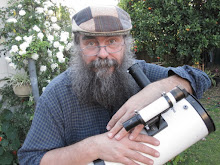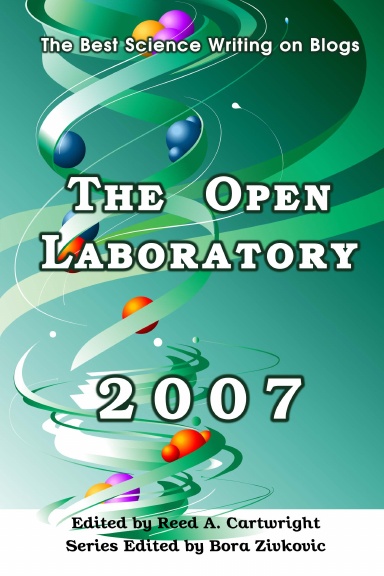Tuesday, July 23, 2024
Thursday July 25 to Thursday August 1
The Last Quarter Moon is Sunday, July 28. Mercury is visible in the evening twilight, with Venus low on the horizon below. Mercury starts the week close to the bright star Regulus, and during the week Venus rises toward Regulus too. Saturn enters the evening sky around 9:30 pm, but is still best in the morning. On the 30th the crescent Moon forms a line with Mars and Aldebaran, with Jupiter below. The 30th also sees the Moon occult the Pleiades and 30-31st is the Southern Delta-Aquarids meteor shower. On the 31st Mars, the thin crescent Moon and Jupiter form a diamond with Aldebaran.
The Last Quarter Moon is Sunday, July 28.
Mercury is well above the western horizon at the end of civil twilight, and is still visible at astronomical twilight an hour and a half after sunset. Mercury is at its closest to the bright star Regulus.
Venus is low on the horizon.
Similar views will be seen from the rest of Australia at the equivalent local time (45 minutes after sunset).
Mercury is well above the western horizon at the end of civil twilight, and is still visible at astronomical twilight an hour and a half after sunset. Mercury has moved away the bright star Regulus and Venus is coming closer, forming a triangle with Mercury and Regulus.
Similar views will be seen from the rest of Australia at the equivalent local time (45 minutes after sunset).
Similar views will be seen from the rest of Australia at the equivalent local time.
Elsewhere in Australia will see a similar view at the equivalent time (90 minutes after sunset).
Mercury climbs higher in the evening sky, it starts the week close to Regulus on the 25th. the moves away.
Venus is higher in the evening twilight. It comes closer to Regulus during the week, forming a triangle with Mercury and Regulus by the end of the week.
Mars is rising in the morning sky but is heading towards Jupiter. On the 30th the crescent Moon forms a line with Mars and Aldebaran, with Jupiter below. On the 31st Mars, the thin crescent Moon and Jupiter form a diamond with Aldebaran.
Jupiter is rising in the the morning twilight sky. Jupiter is below the red star Aldebaran. On the 30th the crescent Moon forms a line with Mars and Aldebaran, with Jupiter below. On the 31st Mars, the thin crescent Moon and Jupiter form a diamond with Aldebaran.
Saturn climbs higher in the late evening sky.
Star Map via Virtual sky. Use your mouse to scroll around and press 8 when your pointer is in the map to set to the current time.
Cloud cover predictions can be found at SkippySky.
Here is the near-real time satellite view of the clouds (day and night) http://satview.bom.gov.au/
Labels: weekly sky
Tuesday, July 16, 2024
Thursday July 18 to Thursday July 25
The Full Moon is Sunday, July 21. Mercury is visible in the evening twilight, with Venus low on the horizon below. Mercury comes closer to the bright star Regulus, and is closest on the 25th. Saturn enters the evening sky around 9:30 pm, but is still best in the morning. On the 24th the waning Moon is close to Saturn. In the morning the lineup of planets is Saturn, Mars and Jupiter. Mars is cloning closer to Jupiter, which is below the red star Aldebaran.
The Full Moon is Sunday, July 21. The Moon is at perigee, when it is closest to the earth, on the 24th.
Mercury is well above the western horizon at the end of civil twilight, and is still visible at astronomical twilight an hour and a half after sunset. Mercury is at its closest to the bright star Regulus.
Venus is low on the horizon.
Similar views will be seen from the rest of Australia at the equivalent local time (45 minutes after sunset).
Elsewhere in Australia will see a similar view at the equivalent time (90 minutes after sunset).
Mercury climbs higher in the evening sky an is close to Regulus on the 25th.
Venus is low in the evening twilight.
Mars is rising in the morning sky but is heading towards Jupiter.
Jupiter is rising in the the morning twilight sky. Jupiter is below the red star Aldebaran.
Saturn climbs higher in the late evening sky. On the 24th the waning Moon is close to Saturn.
Star Map via Virtual sky. Use your mouse to scroll around and press 8 when your pointer is in the map to set to the current time.
Cloud cover predictions can be found at SkippySky.
Here is the near-real time satellite view of the clouds (day and night) http://satview.bom.gov.au/
Labels: weekly sky
Monday, July 08, 2024
Thursday July 11 to Thursday July 18
The First Quarter Moon is Sunday, July 14. Mercury is visible in the evening twilight, with Venus low on the horizon below. Mercury remains visible when the sky is fully dark. Saturn enters the evening sky around 10pm, but is still best in the morning. In a telescope Saturn's famous rings are almost edge on. In the morning the lineup of planets is Saturn, Mars and Jupiter. Jupiter is below the red star Aldebaran. On the 16th Mars and Uranus are half a finger-width apart, a nice view in binoculars.
The First Quarter Moon is Sunday, July 14. The Moon is at apogee, when it is furthest from the earth, on the 12th.
Mercury is well above the western horizon at the end of civil twilight, and is still visible at astronomical twilight an hour and a half after sunset. Venus is low on the horizon. You will need a level unobstructed horizon to see Venus, and possibly binoculars.
Similar views will be seen from the rest of Australia at the equivalent local time (45 minutes after sunset).
Elsewhere in Australia will see a similar view at the equivalent time (90 minutes after sunset).
Mercury climbs higher in the evening sky.
Venus is low in the evening twilight.
Mars is rising in the morning sky but is heading towards Jupiter. On the 15th to 17th it is close to Uranus, being very close on the 16th.
Jupiter is rising in the the morning twilight sky. Jupiter is below the red star Aldebaran.
Saturn climbs higher in the late evening sky.
Star Map via Virtual sky. Use your mouse to scroll around and press 8 when your pointer is in the map to set to the current time.
Cloud cover predictions can be found at SkippySky.
Here is the near-real time satellite view of the clouds (day and night) http://satview.bom.gov.au/
Labels: weekly sky
Monday, July 01, 2024
Thursday July 4 to Thursday July 11
The New Moon is Saturday, July 6. Earth is at aphelion on the 5th. Mercury is visible in the evening twilight and is close to the crescent Moon on the 11th. Saturn enters the evening sky around 11pm, but is still best in the morning. In a telescope Saturn's famous rings are almost edge on. In the morning the lineup of planets is Saturn, Mars and Jupiter. Jupiter is between the red star Aldebaran and the Pleiades cluster. It forms a second "eye" for Taurus the Bull.
The New Moon is Saturday, July 6. Earth is at aphelion, when it is furthest from the Sun on the 5th.
Mercury is well above the western horizon at the end of civil twilight, and is still visible at nautical twilight an hour after sunset. The crescent Moon is above Mercury and Venus is low on the horizon. You will need a level unobstructed horizon to see Venus, and possibly binoculars.
Similar views will be seen from the rest of Australia at the equivalent local time (30 minutes after sunset).
Elsewhere in Australia will see a similar view at the equivalent time (90 minutes after sunset).
Mercury returns to the evening twilight and is close to the crescent moon on the 11th.
Venus returns low in the evening twilight.
Mars is rising in the morning sky but is heading towards Jupiter.
Jupiter is rising in the the morning twilight sky. Jupiter is between the red star Aldebaran and the Pleiades cluster. The crescent Moon forms a line with Jupiter and Mars on the 4th.
Saturn climbs higher in the late evening sky.
Star Map via Virtual sky. Use your mouse to scroll around and press 8 when your pointer is in the map to set to the current time.
Cloud cover predictions can be found at SkippySky.
Here is the near-real time satellite view of the clouds (day and night) http://satview.bom.gov.au/
Labels: weekly sky
Monday, June 24, 2024
Thursday June 27 to Thursday July 4
The Last Quarter Moon is Saturday, June 29. Mercury is visible in the evening twilight. Saturn enters the evening sky around midnight, but is still best in the morning. On the 27th there is an occultation of Saturn low on the eastern horizon near midnight. In a telescope Saturn's famous rings are almost edge on. In the morning the lineup of planets is Saturn, Mars and Jupiter. Jupiter is between the red star Aldebaran and the Pleiades cluster. The crescent Moon is near Mars on the 2nd and Jupiter on the 3rd.
The Last Quarter Moon is Saturday, June 29. The moon is at perigee, when it is closest to the Earth, on the 27th.
Mercury is above the western horizon at the end of civil twilight, you may need a clear, unobstructed horizon and binoculars to see it.
Similar views will be seen from the rest of Australia at the equivalent local time (30 minutes after sunset).
Saturn is just emerging from behind the dark limb of the Moon.
Similar views will be seen from east coast, and some southern central Australia at a similar time.Detailed times and spotters charts are at my occultation site.
Elsewhere in Australia will see a similar view at the equivalent time (90 minutes after sunset).
Mercury returns to the evening twilight
Venus is lost in the twilight.
Mars is rising in the morning sky. The crescent Moon is near Mars on the 2nd.
Jupiter is rising in the the morning twilight sky. Jupiter is between the red star Aldebaran and the Pleiades cluster. The crescent Moon is near Jupiter on the 3rd.
Saturn climbs higher in the morning sky. Saturn is occulted by the Moon on the 27th.
Star Map via Virtual sky. Use your mouse to scroll around and press 8 when your pointer is in the map to set to the current time.
Cloud cover predictions can be found at SkippySky.
Here is the near-real time satellite view of the clouds (day and night) http://satview.bom.gov.au/
Labels: weekly sky
Wednesday, June 19, 2024
Thursday June 20 to Thursday June 27
The Full Moon is Saturday, June 22. The Earth is at solstice on the 21st. By the weeks end Mercury is visible in the evening twilight. Saturn enters the evening sky around midnight, but is still best in the morning. On the 27th there is an occultation of Saturn low on the eastern horizon near midnight. In a telescope Saturn's famous rings are almost edge on. In the morning the lineup of planets is Saturn, Mars and Jupiter. Jupiter is between the red star Aldebaran and the Pleiades cluster.
The Full Moon is Saturday, June 22. The Earth is at solstice, when the night is longest, on the 21st.
Mercury is above the western horizon at the end of civil twilight, you may need a clear, unobstructed horizon and binoculars to see it.
Similar views will be seen from the rest of Australia at the equivalent local time (30 minutes after sunset).
Saturn is just emerging from behind the dark limb of the Moon.
Similar views will be seen from east coast, and some southern central Australia at a similar time.Detailed times and spotters charts are at my occultation site.
Elsewhere in Australia will see a similar view at the equivalent time (90 minutes after sunset).
Mercury returns to the evening twilight
Venus is lost in the twilight.
Mars is rising in the morning sky.
Jupiter is rising in the the morning twilight sky. Jupiter is between the red star Aldebaran and the Pleiades cluster.
Saturn climbs higher in the morning sky. Saturn is occulted by the Moon on the 27th.
Star Map via Virtual sky. Use your mouse to scroll around and press 8 when your pointer is in the map to set to the current time.
Cloud cover predictions can be found at SkippySky.
Here is the near-real time satellite view of the clouds (day and night) http://satview.bom.gov.au/
Labels: weekly sky
Occultation of Saturn, Thursday, 27June 2024.
| The Moon at 23:07pm ACST in Adelaide looking east on Thursday 27 June just as Saturn reappears. The inset shows the binocular view as Saturn reappears (click to embiggen). | The Moon at 23:47pm AEST in Brisbane looking east on Thursday 27 June just as Saturn reappears. The inset shows the binocular view as Saturn reappears (click to embiggen). | The Moon at 23:39pm AEST in Canberra looking east on Thursday 27 June just as Saturn reappears. The inset shows the binocular view as Saturn reappears (click to embiggen). |
On the evening of Thursday, June 27, between 11pm and midnight there is an occultation of Saturn. The second of three occultations seen from Australia this year. This best as a binocular and telescope event. The Moon will have just risen, so this will be difficult for telescopes.
The path of the occultation, taken from the the IOTA site
This occultation is visible from the eastern states from Cairns to
Melbourne. and part of central Australia.
In the rest of Australia the Moon and Saturn will be very close when the Moon rises.
Start watching about half an hour beforehand to get set up and familiar with the sky. Saturn will disappear behind the bright limb of the Moon very close to the horizon. In Cairns, Melbourne and Adelaide the Moon will rise with Saturn behind the Moon, you will need a level, unobscured horizon to see the occultation.
Again, as the Moon is close to the horizon when ingress occurs it will be difficult to get telescopes to point that low, and binoculars will be required. By the time Saturn reappears the Moon will be higher (around 15°) so telescopes may be successful. As Saturn reappears from behind the dark limb of the moon this should be quite dramatic.
Imaging Saturn and the Moon together will be a challenge, due to the differences in brightness, again however, as Saturn appears from behind the dark limb, some over exposure of the Moon will not really affect Saturn. You will need a high ISO (3200 to 1600) to have a short enough exposure time to stop Saturn from trailing. Try practicing the night or morning before to get an idea of your cameras/mobile phones performance. You will need a tripod for your camera or binoculars, and possibly some wy to attach the camera to binoculars or telescope (dedicated amateur astronomers will already have this kit). See this post for some examples.
| Place | Disappears Bright Limb | Reappears Dark Limb |
| Adelaide ACST | - | 23:07 |
| Brisbane AEST | 22:50 | 23:47 |
| Carins AEST | - | 23:08 |
| Canberra AEST | 22:58 | 23:39 |
| Darwin ACST | - | - |
| Hobart AEST | - | - |
| Melbourne AEST | - | 23:39 |
| Perth AWST | - | - |
| Sydney AEST | 22:56 | 23:41 |
| Rockhampton AEST | 22:49 | 23:46 |
| Townsville AEST | 22:51 | 23:44 |
More cities in Australia and New Zealand can be found at the IOTA site (UT times only).
Labels: binoculars, Moon, Occultation, Saturn, telescope
Tuesday, June 11, 2024
Thursday June 13 to Thursday June 20
The First Quarter Moon is Friday, June 14. Comet 12P Pons-Brooks is no longer visible in binoculars. Saturn enters the evening sky around midnight, but is still best in the morning. In a telescope Saturn's famous rings are almost edge on. In the morning the lineup of planets is Saturn, Mars and Jupiter. with Jupiter low on the horizon.
The First Quarter Moon is Friday, June 14. The moon is at apogee, when it is furthest from the Earth, at this time.
The constellation of Scorpius is now clearly visible above the eastern horizon. If your skies are dark enough, you can see the indigenous dark constellation of the Emu.
Similar views will be seen from the rest of Australia at the equivalent local time (90 minutes after sunset).
Elsewhere in Australia will see a similar view at the equivalent time (90 minutes after sunset).
Mercury is lost in the twilight
Venus is lost in the twilight.
Mars is rising in the morning sky.
Jupiter is low the the morning twilight sky.
Saturn climbs higher in the morning sky.
Star Map via Virtual sky. Use your mouse to scroll around and press 8 when your pointer is in the map to set to the current time.
Cloud cover predictions can be found at SkippySky.
Here is the near-real time satellite view of the clouds (day and night) http://satview.bom.gov.au/
Labels: weekly sky































 Click to read about or order
Click to read about or order Click to read about or order
Click to read about or order Click to read about or order
Click to read about or order Click to read about or order
Click to read about or order